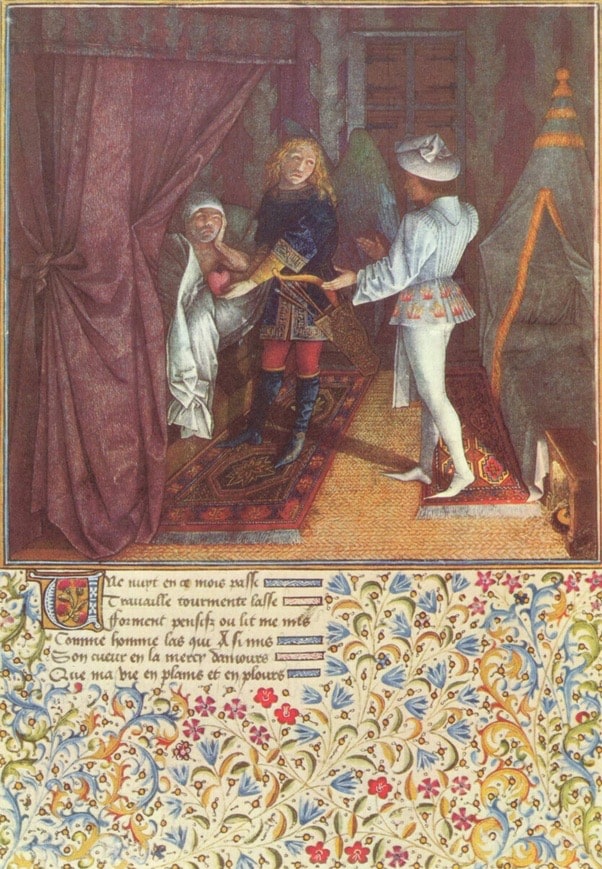This past year allowed us to work with many embroidery techniques from India, which are traditionally practised as embroideries of gold. A few days ago, when we wrote about one such Embroidery of Gold- Zardozi Embroidery, we received a great response. Therefore we feel encouraged to share more on Indian embroidery techniques from the genre of ‘gold.’ One such technique is Gota Work or Lappe Ka Kaam. (more…)
Jacobean Embroidery : We live in our current times in houses or apartments, which are fully furnished, heated in winter, and adorned extensively with textiles for aesthetic reasons and utility. But there was a time in England and the rest of the world that houses were draughty, furniture scarce, and cloth was restricted to wool, linen, and silk. There were rushes on the floor, which dogs and often people would relieve themselves in, making interiors malodorous. People often shifted from one house to another, an itinerant lifestyle because homes became quickly unhygienic.

Thilak Reddy was introduced to us for the first time at the Santa Fe Folk Art Market, In spite of all of his talent and achievements, he is one of the most humble and hardworking people we have ever met.
Thilak, 32, practices the art of hand printing the fabrics using a bamboo pen and natural dyes to achieve intricate designs. He lives with his sister and mother in Srikalahasti, that has an indelible history of India’s painted and printed cotton trade with the world. Read here.
 He is a second generation Kalamkari artist after his father. Thilak started practicing this craft at a very young age and has now been working for over 20 years. After graduation, he lost his father. He had no option but to take over all his father’s projects to help put food on the table. (more…)
He is a second generation Kalamkari artist after his father. Thilak started practicing this craft at a very young age and has now been working for over 20 years. After graduation, he lost his father. He had no option but to take over all his father’s projects to help put food on the table. (more…)

Bagh Printing: Traditional Block Printing Technique from Madhya Pradesh
Block printing dates back to over 2000 years ago, during Buddha’s time. The trade of printed textiles from India flourished during the medieval age and 12th century. While the Coromandel Coast boasted of Kalamkari, the states of Gujarat and Rajasthan were built on block printed textiles. These soft intricate textiles, mostly naturally dyed, built a textile tradition that is still relevant today.
My tryst with block prints began with my mother. Seeing her wear indigo prints is what I grew up with. She wore exclusively cotton, a perfect textile for the Indian climate. The madder, indigo and mustard color of these calico textiles kept the body cool and soul happy.
CHIKANKARI EMBROIDERY HISTORY
Traditional Chikankari Embroidery at a NYC based company. The historical city of Lucknow with its detailed architecture is synonymous with Chikankari embroidery. In 1775, Lucknow had become the capital of the city of Oudh. It at once began to attract craftsmen, artists and musicians, who were patronized by the Mughal court.
The stitches of white on white patterns such as paisleys and florals adorn the surface of the fabric . The use of untwisted cotton or silk threads was common. Some stitches start from the front of the fabric, others from the back. There are six basic stitches, which form a large repertoire of stitches as a combination of each other for embossing flowers and leaves.
(more…)




